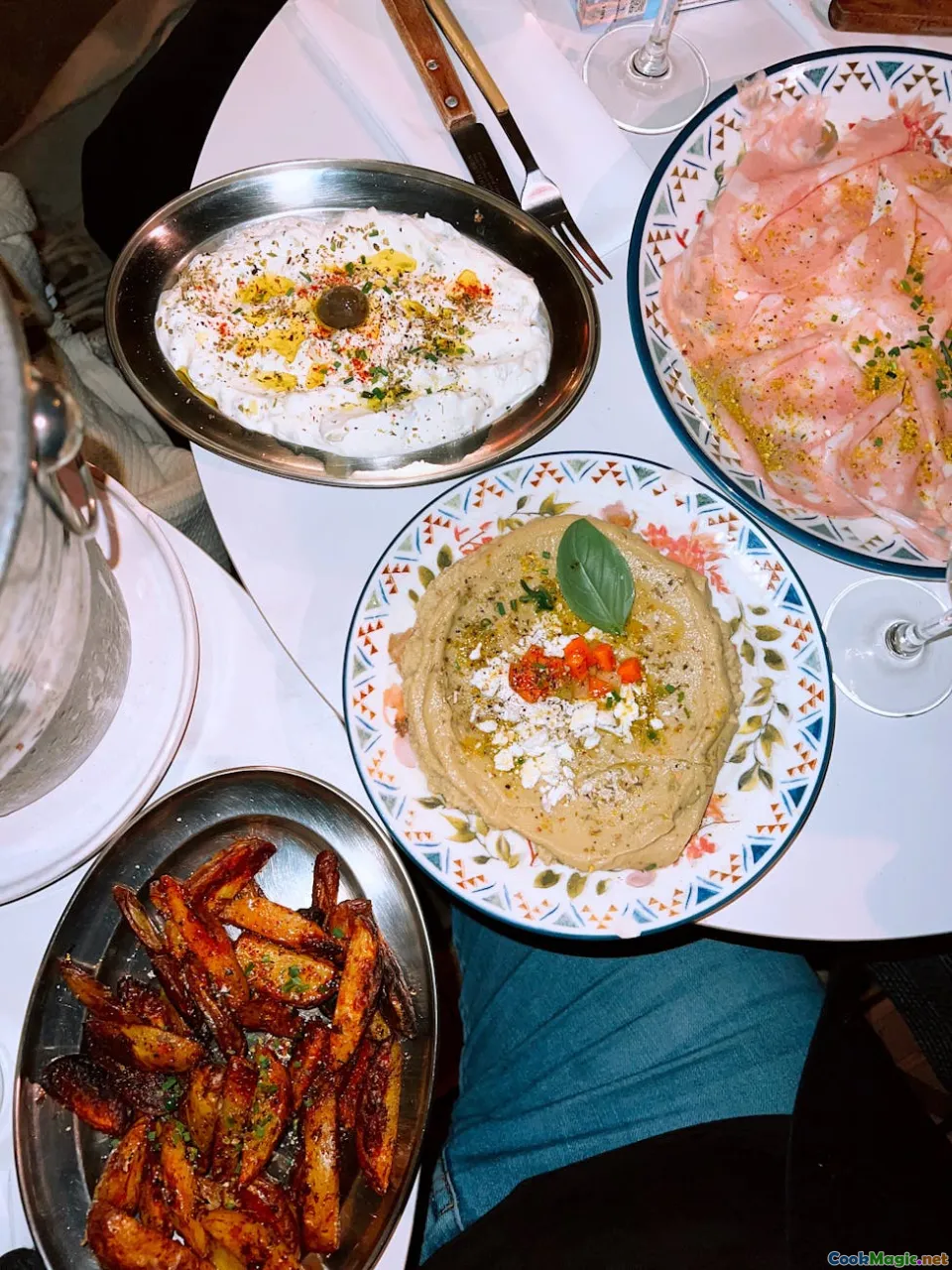Flavors of the Levant
7 min read Discover the rich tapestry of flavors from the Levant, exploring vibrant dishes, aromatic spices, and centuries-old culinary traditions that define this region. May 01, 2025 11:00
Flavors of the Levant
Imagine walking through a bustling market in Beirut, Damascus, or Amman—colors bursting from vibrant stalls, aromas weaving through the air, and the promise of a meal that embodies centuries of history and culture. The Levant, a region that spans modern-day Lebanon, Syria, Jordan, Palestine, and parts of Iraq, is a culinary mosaic that offers an unparalleled depth of flavors, textures, and aromas. Its cuisine is not just food; it’s a living narrative of trade routes, empires, and shared traditions.
An Introduction to the Levant’s Culinary Soul
The Levant's culinary identity is rooted in its land, history, and the diverse peoples who have called this region home. It’s a cuisine characterized by bold spices, fresh herbs, tangy citrus, and slow-cooked stews that tell stories of resilience and hospitality. Food here is a communal experience—shared at family tables, celebrated during festivals, and woven into the social fabric.
The Cultural Tapestry of Flavors
Historical Influences
The Levant’s position as a crossroads of civilizations has infused its cuisine with a melange of influences—from ancient Phoenician and Canaanite roots to Arab, Ottoman, and Mediterranean flavors. The spice trade routes passing through this region introduced a myriad of seasonings like sumac, za’atar, and cinnamon, which remain staples today.
Social Significance
Food in the Levant is more than sustenance; it’s a language of hospitality and identity. Sharing mezze—a selection of small dishes—is a cherished tradition that fosters community and connection. The act of breaking bread together, whether with warm flatbreads or stuffed grape leaves, symbolizes unity and generosity.
Sensory Journey Through Levantine Cuisine
Aromatic Spices and Herbs
The aroma of roasted cumin, fragrant coriander, and pungent garlic wafts through Levantine kitchens, awakening the senses before the first bite. Herbs like parsley, mint, and cilantro add freshness, balancing the richness of meats and legumes.
Texture and Visual Appeal
Levantine dishes boast a delightful contrast of textures—from the crispy edges of manakish (flatbread topped with za’atar and olive oil) to the silky smoothness of hummus and labneh. Colorful salads, vibrant pickles, and golden-brown falafel create an inviting visual feast.
Signature Dishes
- Hummus and Baba Ganoush: Creamy, smoky dips served with warm pita, perfect for dipping or spreading.
- Kibbeh: Ground meat or bulgur shells filled with spiced meat, baked or fried to perfection.
- Fattoush: A fresh salad of mixed greens, radishes, and crispy pita chips, dressed with sumac and lemon.
- Maqluba: An upside-down rice and vegetable casserole that’s both hearty and visually stunning.
- Kofta: Juicy meatballs infused with herbs and spices, grilled or simmered in tomato sauce.
Personal Reflections and Culinary Experiences
My journey into Levantine flavors began during a visit to a family-owned restaurant in Beirut, where the air was thick with the scent of cumin and lemon. Sharing a mezze platter with locals, I discovered that each dish was a celebration of history and community—a harmony of flavors that told stories of resilience through centuries of change.
Cooking Levantine food at home is an act of connection. I recall preparing a batch of Mujaddara—lentils and rice topped with crispy fried onions—using simple ingredients but resulting in a dish that felt like a warm embrace, a reminder of the region’s rich culinary heritage.
Traditional Techniques and Modern Twists
Levantine cuisine relies on slow-cooking methods like braising and roasting to deepen flavors. The use of olive oil, often extra virgin, adds richness and authenticity. Today, chefs are blending traditional techniques with contemporary plating and presentation, making Levantine dishes not only flavorful but also visually captivating.
The Role of Spices and Condiments
Spices are the soul of Levantine cooking. Sumac lends a tangy brightness, while za’atar—a blend of thyme, sesame seeds, and sumac—adds earthiness and aroma. Pomegranate molasses offers a sweet-tart punch that elevates salads and grilled meats.
Celebratory and Everyday Food
While Levantine dishes shine at festive tables, they are also everyday staples. A bowl of lentil soup, a plate of grilled kebabs, or a simple tomato and cucumber salad can be part of daily life, embodying the region’s emphasis on fresh, accessible ingredients.
Final Thoughts: Embracing the Flavors of the Levant
Exploring the flavors of the Levant is an immersive experience—one that awakens the senses and connects us to a rich tapestry of history, culture, and community. Whether you’re creating a humble meal or a festive feast, embracing these flavors invites you into a world where food is a celebration of life, resilience, and shared stories.
So, gather your spices, invite friends or family, and embark on your own culinary journey through the Levant. The region’s vibrant flavors await to delight your palate and inspire your cooking adventures.









